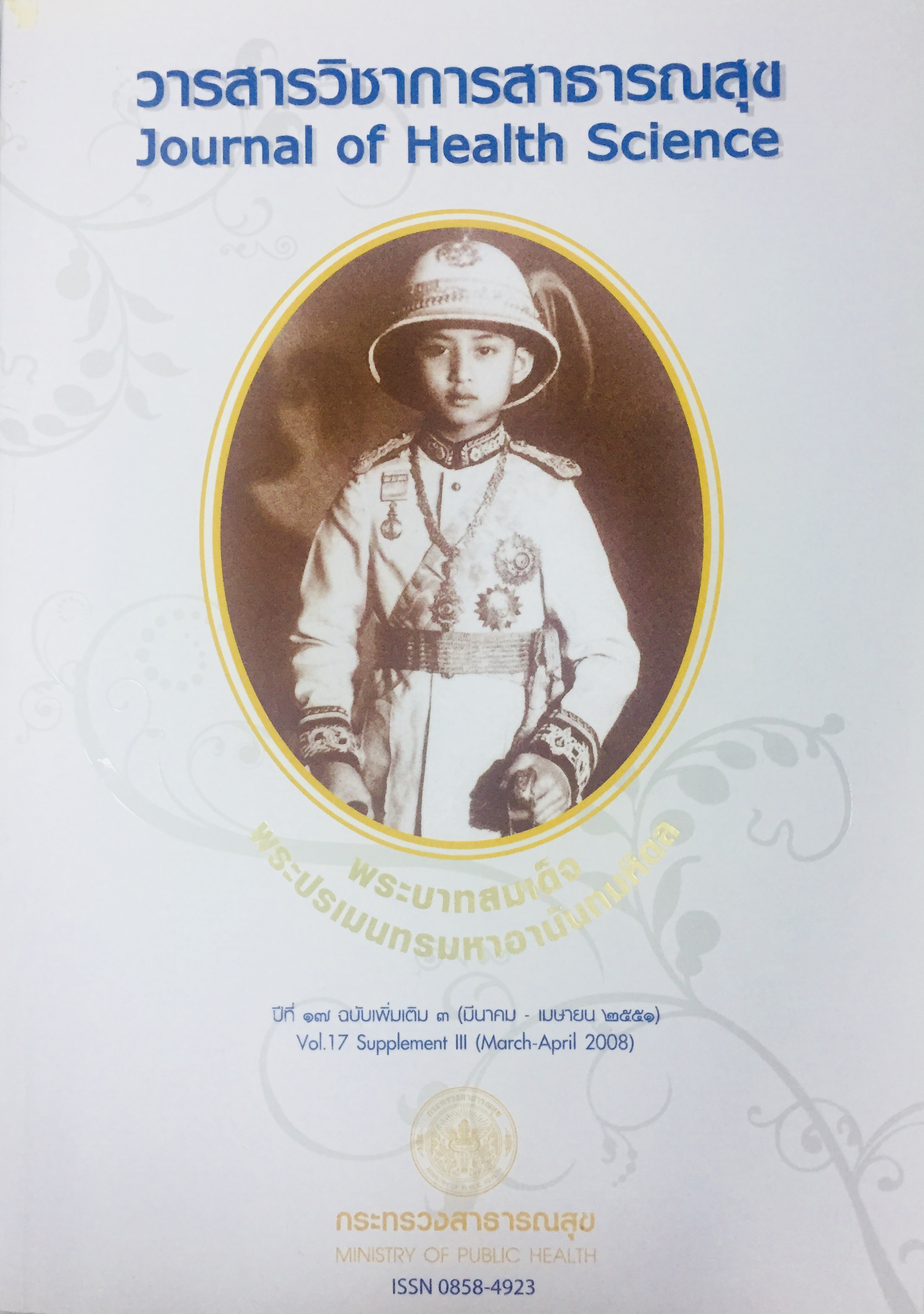Prevalence, Risk Factors and Treatment Outcome of Scabies among Students at Suphanburipunyanugul
Keywords:
scabies, prevalence, risk factorAbstract
This prospective analytic study was to screen and determine the prevalence, risk factors and treatment of scabies infestation among all 444 Thai students at Suphanburipunyanugul school, during January-March 2008. Demographic data, risk factors and clinical signs were obtained by interviewing, examination and definitive diagnosis was made by skin scraping under microscopic identification of the mites, eggs or fecal pellet. The prevalence rate of scabies infestation was 27.9 percent .The ratio male to female was 1.6:1. The prevalence of scabies was the highest in the age group 6-10 years, grade 1- 6 students and came from the Central part ofThailand. Scabies in this study mostly presented as nocturnal itching and the prodermal time was about 3 weeks. The most common presenting lesions were pruritic papules with frequent involvement of the finger web, followed by abdomen and genitalia. Most of the patients were not aware of the main source of scabies and some were infested from other students at close contact. The treatment of scabies with 1% gamma benzene hexachloride was successful at the rate of 61 percent after the first treatment. The cure rate increased after the second treatment (73%) and all were cured within the 4th week after the first treatment. The high prevalence of scabies was associated with poor personal hygiene (p < 0.001, OR 304.9, 95%CI 122.9, 756.2) and overcrowding condition (p=0.001, OR 83.1, 95%CI 23.3, 295.4). Health education and a clear policy in order to control infestation and transmission, early diagnosis and effective treatment may reduce the prevalence rate of reinfestation and transmission of scabies to community.
Downloads
Downloads
Published
How to Cite
Issue
Section
License
Copyright (c) 2018 Journal of Health Science

This work is licensed under a Creative Commons Attribution-NonCommercial-NoDerivatives 4.0 International License.







